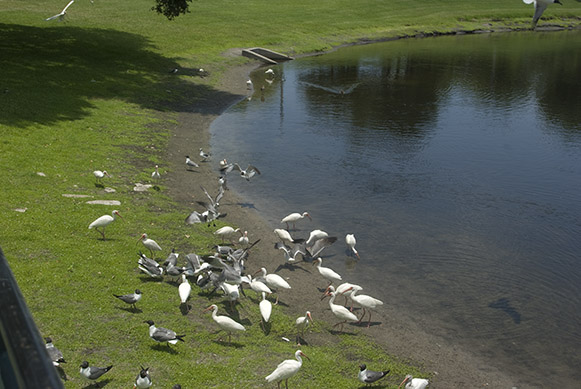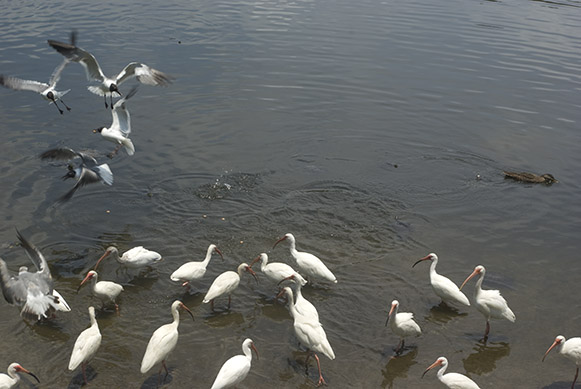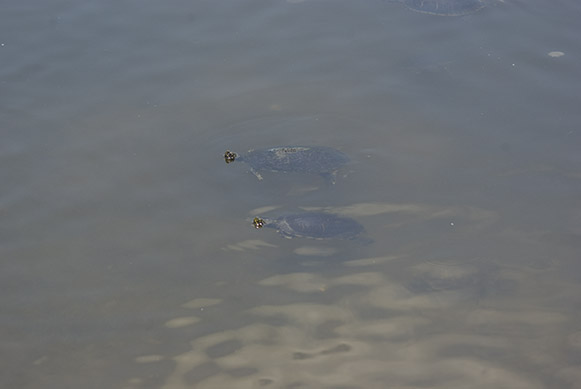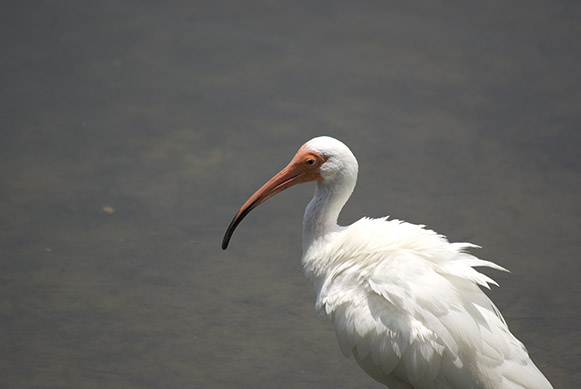Since I will soon be going into the field of Library Science I’ve been philosophizing a lot lately on my upcoming status change to SE. Though disowned for this treachery by my academ friends (especially Rob), I will console myself with bad fashion, a nervous laugh I have been practicing for social situations, and above average math skills (which I, unfortunately, already have but attempt manfully to hide). On the plus side of this coming transformation: I can now conduct science experiments!!! And not the lame kind you do in high school that involve watching a beaker slowly fill up with acid or something. The kind with explosions! Live animals! And fabricated results! I bring you my first such science experiment, now with twice the scientific method!
Basically, I wanted to answer the age old question: Will anything actually eat Cookie Crisp?
Here is my lab report, as put together based on this “scientific method” flow chart I found on Sciencebuddies.org
Ask a Question
Will anything actually eat Cookie Crisp?
Background Research
The reasoning behind this experiment is childish, but easy to follow, like all science should be. A few weeks ago I was at an unassuming Piggly Wiggly in Columbia, TN when I noticed they had Cookie Crisp cereal, so I bought some for Steven because I remembered him saying how much he liked it and how sad he was that it had apparently been discontinued. He disavowed any knowledge of this conversation (we’ve since worked out that it was actually Waffle Crisp) and the box has just sat around. We finally decided to do something about it, by finding someone or SOMETHING that will eat it.
The box claims to offer “the great taste of chocolate chip cookies and milk” when in reality it’s obvious that you have to add the milk yourself. Even before beginning the experiment I suspected the “great” in that promise is also a lie.
Construct a Hypothesis
Nothing will eat this shit. I bet it tastes like sugar-coated cardboard.
Test with an Experiment
Steven and I grudgingly agreed that we would at least have to taste the offending cereal before continuing on with the experiment. I now feel justified in my hypothesis, at least so far as “sugar-coated cardboard” is concerned. Steven was more generous in saying they were “over-processed, under-flavored, puffed sugar substitute with a little bit of plastic chocolate. But they’re mad cute”. Thinking that we were perhaps too old to comprehend the joys of eating cookies for breakfast, we turned to younger test subjects. My brother, a full 4 years younger, pondered for a few moments before pronouncing it “stale, with a hint of Saskatchewan”. Now that I am a scientist instead of an academ, I will refrain from trying to puzzle out the hidden symbolism. Still, it seemed less negative so we tried even younger. My ten-year-old cousin, who happened to visiting, passed the box of tempting Cookie Crisp up four mornings in a row in favor of the healthy Crispix alternative, despite my scientific cajoling.
Finally, in despair, we took our full box of Cookie Crisp to the park to see if the birds would even eat it. My money was on No. The ducks, ibises, and egrets that frequented Seminole’s parks have too discerning palettes for such trash. MAYBE the seagulls. But here is where I was wrong.

Immediately we had a sizeable crowd, mostly of seagulls and ibises

Although the commotion quickly moved towards the water where a surprisingly large group of turtles joined in

A satisfied turtle, now filled with Vitamin D

Is this ibis really now filled with essential vitamins and minerals? Results are inconclusive.
Analyze Results
People won’t eat Cookie Crisp, even if they are in the intended age group. But animals go nuts for it.
Hypothesis is false
Or at least, partially false. I still think they taste like sugar-coated cardboard.
Report Findings
Apparently, Florida’s staggering population of the elderly are not doing their jobs. These birds and reptiles were obviously starving to death, forcing them to take even the most pitiful nutrients offered by Cookie Crisp to survive. For shame, old people! Without your hoarded breadcrumbs, scattered like the lost opportunities and failed dreams of your life, America’s park birds will die out! And you can’t expect me to go around feeding them Cookie Crisp all the time. Eventually they’ll realize that they prefer starvation.
So scientific right now!!!
The fact that you have already mastered the art of extrapolating your findings into a call for societal improvement is a surefire sign that you’re ready for the exciting world of SCIENCE!
The fact that you have already mastered the art of extrapolating your findings into a call for societal improvement is a surefire sign that you’re ready for the exciting world of SCIENCE!
Oops…forgot to say great post! Looking forward to your next one.
What? You didn’t test the second half of your hypothesis? You should coat cardboard with sugar and taste it. Only after this will we be able to bestow upon you the title of Patricia Ladd, SE. And teach you the secret vow.